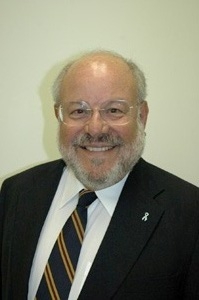NASA intends in coming weeks to launch a rover to be deployed on Mars fueled with 10.6 pounds of plutonium. Opponents of the launch in Florida, concerned about an accident releasing deadly plutonium, such as the explosion of the rocket that's to loft the rover, have created a Facebook page warning people not to visit Disney theme parks in Orlando during the November 25-to-December 15 launch window. "Don't Do Disney brought to you by NASA," the Facebook page is titled. Other actions are planned.
Indeed, NASA's Final Environmental Impact Statement for the Mars Science Laboratory Mission says a launch accident discharging plutonium has a 1-in-420 chance of happening and could "release material into the regional area defined"to be within"62 miles of the launch pad," That's an area including Orlando.
The EIS says "overall" on the mission, the likelihood of plutonium being released is just 1-in-220. This could affect a major portion of Earth in an accident which vaporizes and disperses plutonium from the rover, called Curiosity, as the Atlas 5 rocket carrying it up gains altitude.
The EIS says an accident releasing plutonium in the troposphere, the atmosphere five to nine miles high, is "assumed to potentially affect persons living within a latitude band from approximately 23-degrees north to 30-degrees north." That's a swath through the Caribbean, across North Africa and the Middle East, then parts of India and China, Hawaii and other Pacific islands, Mexico, and south Texas.
If there's an accident resulting in plutonium fallout which occurs above that and before the rocket breaks through Earth's gravitational field, people could be affected "anywhere between 28-degrees north and 28-degrees south latitude," says the EIS. That's a band around the mid-section of the Earth which includes much of South America, Africa and Australia.
The EIS says the cost of decontamination of areas affected by the plutonium would be $267 million for each square mile of farmland, $478 million for each square mile of forests and $1.5 billion for each square mile of "mixed-use urban areas."
The mission itself has a cost of $2.5 billion.
"NASA is planning a mission that could endanger not only its future but the state of Florida and beyond," declares John Stewart of Pax Christi Tampa Bay, a leader in Florida in challenging the launch. "The absurd--and maddening--aspect of this risk is that it is unnecessary," says Stewart, a teacher. "The locomotion for NASA's Sojourner Mars rover, launched in 1996, and the Spirit and Opportunity Mars rovers, both launched in 2003, was solar powered, with the latter two rovers performing well beyond what their engineers expected. Curiosity's locomotion could also be solar-powered. NASA admits this in its EIS, but decided to put us all at risk because plutonium-powered batteries last longer and they want to have the "flexibility to select the most scientifically interesting location on the surface' of Mars."
Bruce Gagnon, coordinator of the Global Network Against Weapons & Nuclear Power in Space, which has been opposing NASA's nuclear missions for two decades, says "NASA sadly appears committed to maintaining its dangerous alliance with the nuclear industry. Both entities view space as a new market for the deadly plutonium fuel. The taxpayers are being asked once again to pay for nuclear missions that could endanger the lives of all the people on the planet. Have we not learned anything from Chernobyl and Fukushima? We don't need to be launching nukes into space. It's not a gamble we can afford to take."
Since the 1950s, NASA has used nuclear power in space--and there have been accidents. Of the 26 U.S. space missions listed in the EIS that have used plutonium, three underwent accidents, the EIS admits. The worst occurred in 1964 and involved, it notes, the SNAP-9A plutonium system aboard a satellite that failed to achieve orbit and dropped to earth, disintegrating as it fell. The 2.1 pounds of plutonium fuel dispersed widely over the Earth.
The late Dr. John Gofman, professor of medical physics at the University of California at Berkeley, long linked this accident to an increase in global lung cancer. With the SNAP-9A accident, NASA switched to solar energy on satellites. Now all satellites and the International Space Station are solar powered.
But NASA insisted on using plutonium as a power source on space probes--claiming that solar energy cannot be utilized beyond the orbit of Mars. But this August it reversed itself with the launch of the solar-powered Juno space probe to Jupiter.
In its description of the Juno mission, NASA states that even when the probe gets to Jupiter, "nearly 500 million miles from the Sun," its panels will be providing electricity.
The choice of solar power by NASA on Juno was less than voluntary, however. The Associated Press has described Scott Bolton, the principal investigator for the Juno mission for the Southwest Research Institute, a NASA contractor, as maintaining "the choice of solar was a practical one"No plutonium-powered generators were available to him and his San Antonio-based team nearly a decade ago so they opted for solar panels rather than develop a new nuclear source."
The plutonium-fueled Curiosity mission could herald an expanded NASA space nuclear power program--not just for space probes but involving nuclear-propelled rockets.
During the 1950s and 60s, NASA, working with the U.S. Atomic Energy Commission, built such rockets under a program called NERVA (for Nuclear Engine for Rocket Vehicle Application) and then Projects Pluto, Rover and Poodle. Billions in 1950s-1960s dollars were spent and ground-testing done, but no nuclear rocket ever got off the ground. There were concerns about a nuclear rocket blowing up on launch and crashing back to Earth.
(Note: You can view every article as one long page if you sign up as an Advocate Member, or higher).





